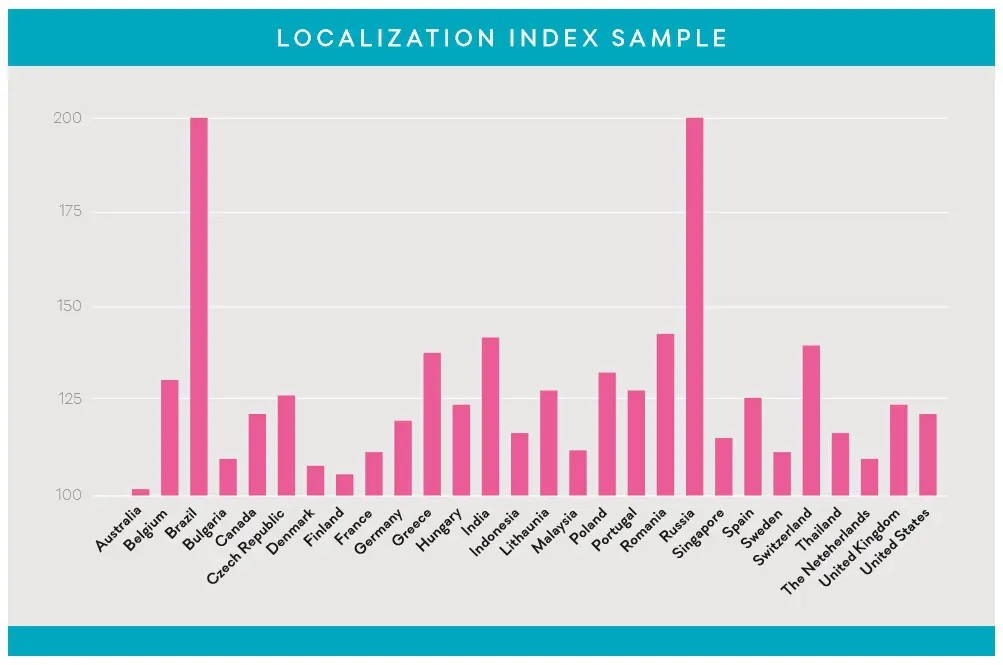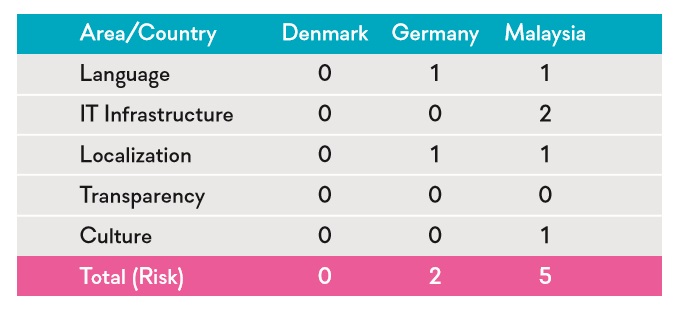Whenever you assume something about ERP systems across borders, assume you’re wrong. The surprises are always hidden in the details. The ERP localization challenge is a typical example of this: never underestimate local complexity.
You might have decided to use one language (English) across borders and streamlined your processes across your subsidiaries – that simplifies, of course, but still you are note home safe. Localization is not limited to languages – far from it! You will find that regulatory requirements vary tremendously from country to country. Just within Europe, VAT, taxes, regulatory requirements can be completely different from one country to the other. And then other practical things add up to this: have you taken into consideration the various options for internet access? Depending on the country language can be a significant barrier and finally culture plays a major role – or rather the difference between cultures – also within the same company.
Define your project’s cross localization index
Because Pipol have spent the past many years dealing with International ERP projects, we have analyzed the degree of diversity in regulatory requirements between different countries – as shown in the picture below. Note that global common denominator (ERP Localization Index) is set as index 100.
The Cross Localization Index shows how much gap there is between the two countries’ local legislative requirements in a business management solution perspective.
This means that, if a country has a localization Index of 110 and another country an Index of 105, the cross localization index of the two countries will be at 115 (100 + 10 + 5).
When does it become a complex localization? We tend to have a subjective limit around index 125. If the index is under 125 it is simple while indexes over 125 are complex. If the solution includes several countries, you can use the Cross Localization Index to calculate the multiple Cross Localization Index between the countries calculated. Take for example the case of a company that wants to implement a core ERP system in Denmark, Germany and Malaysia. Let’s calculate the multiple cross localization index to assess the complexity of the task.

In this case, the Cross Localization Index is 100 + 29 + 23 + 34 = 186, so a fairly complex task.
Build an ERP localization scorecard to calculate risk
It is also possible to work with the index to define the complexity of your local implementations, where localization will only be a part of it. Below is a quick example of how a scorecard can be built:
- Language: are there English-speaking resources locally? Can they actually really work in English? (rate the risk from 0 to 3, where 0 is the lowest risk)
- IT infrastructure: accessibility, internet access, power, risk of theft, etc. (0-3)
- Localization: complexity of localization (0-3… for example, Russia or Brazil will here get a 3)
- Transparency: do you really know what is going on? Is there a local partner you can trust? (0-5)
- Culture: we work with the same standards and efficiency (0-5)
Pursuing with the example above, this scorecard will look like this:

Note that you can add or remove other aspects to build a model that fully fits your project.
In an international ERP project, localizations are never a walk in the park. But there are tools to understand that complexity and plan around it. You can reach out to Pipol for a Free Assessment to help you judge the complexity of your localization project.




